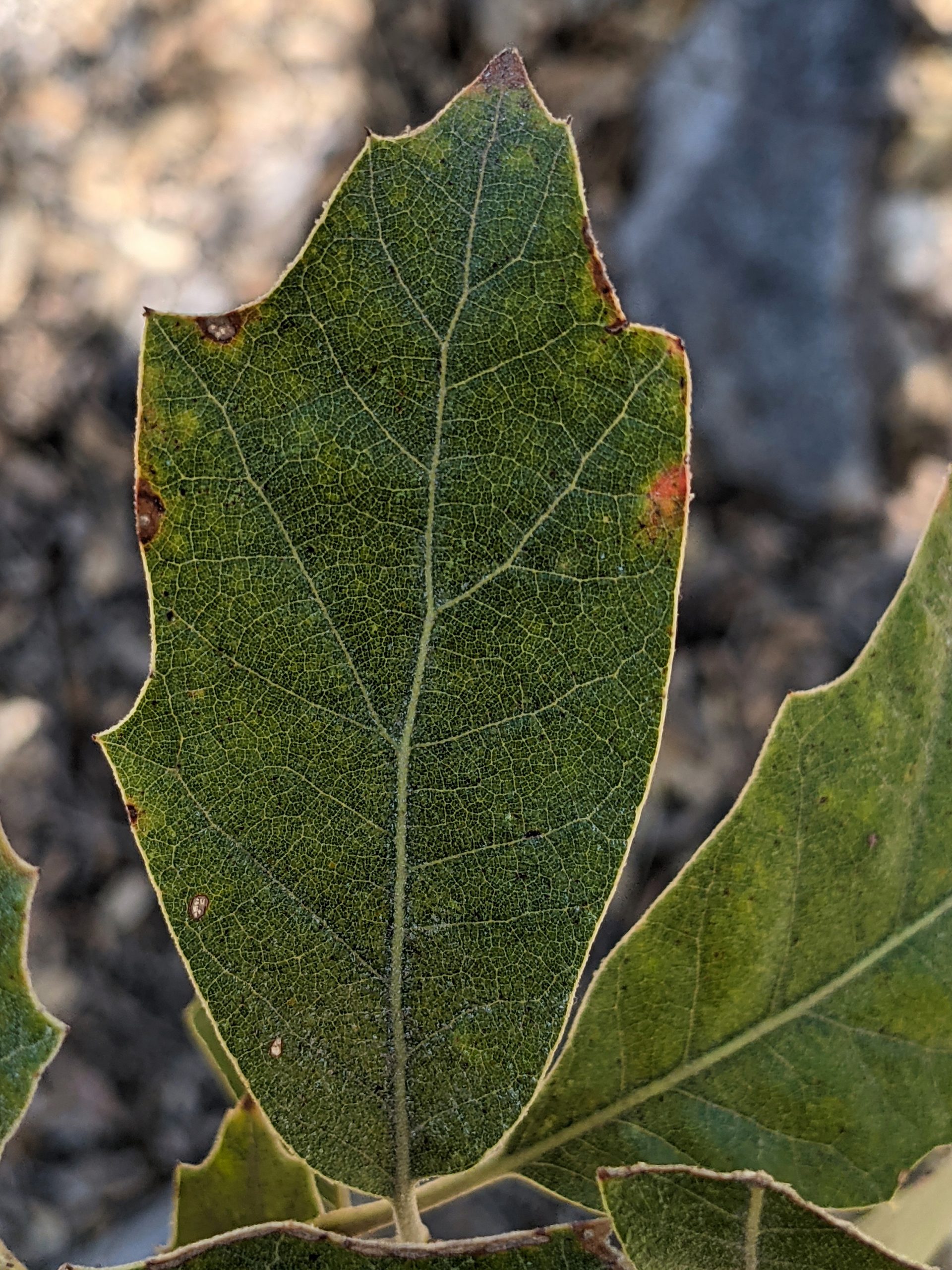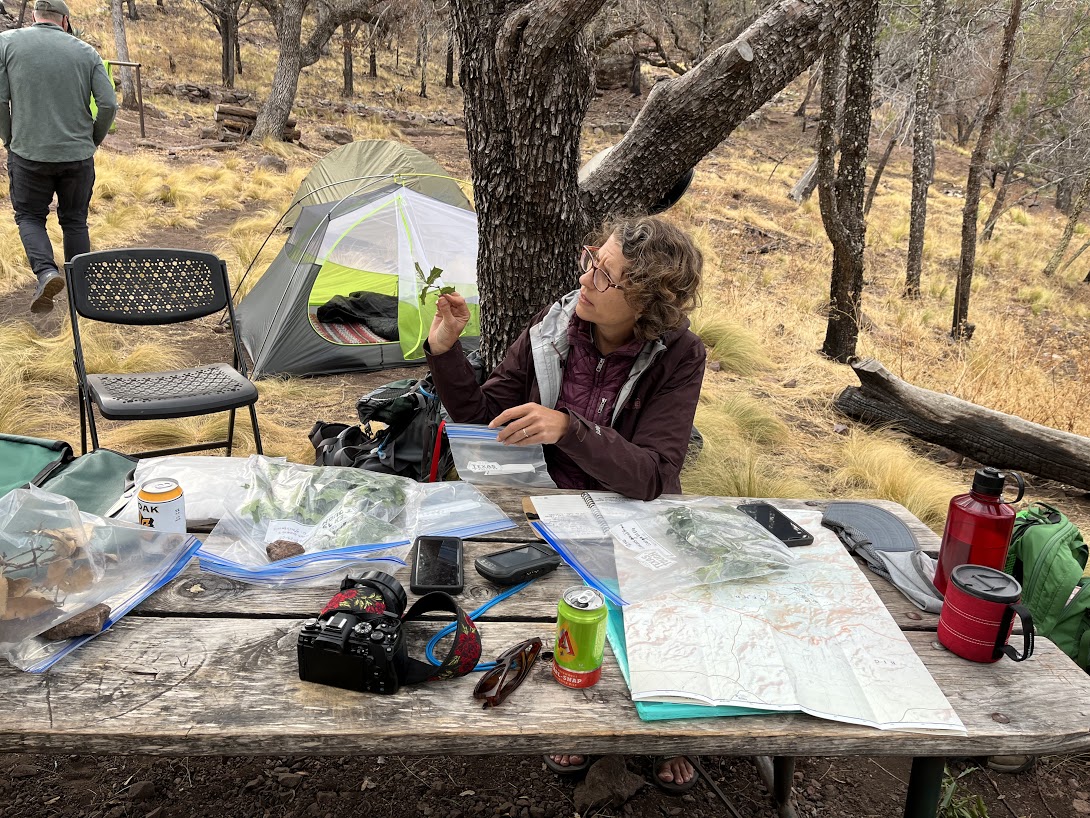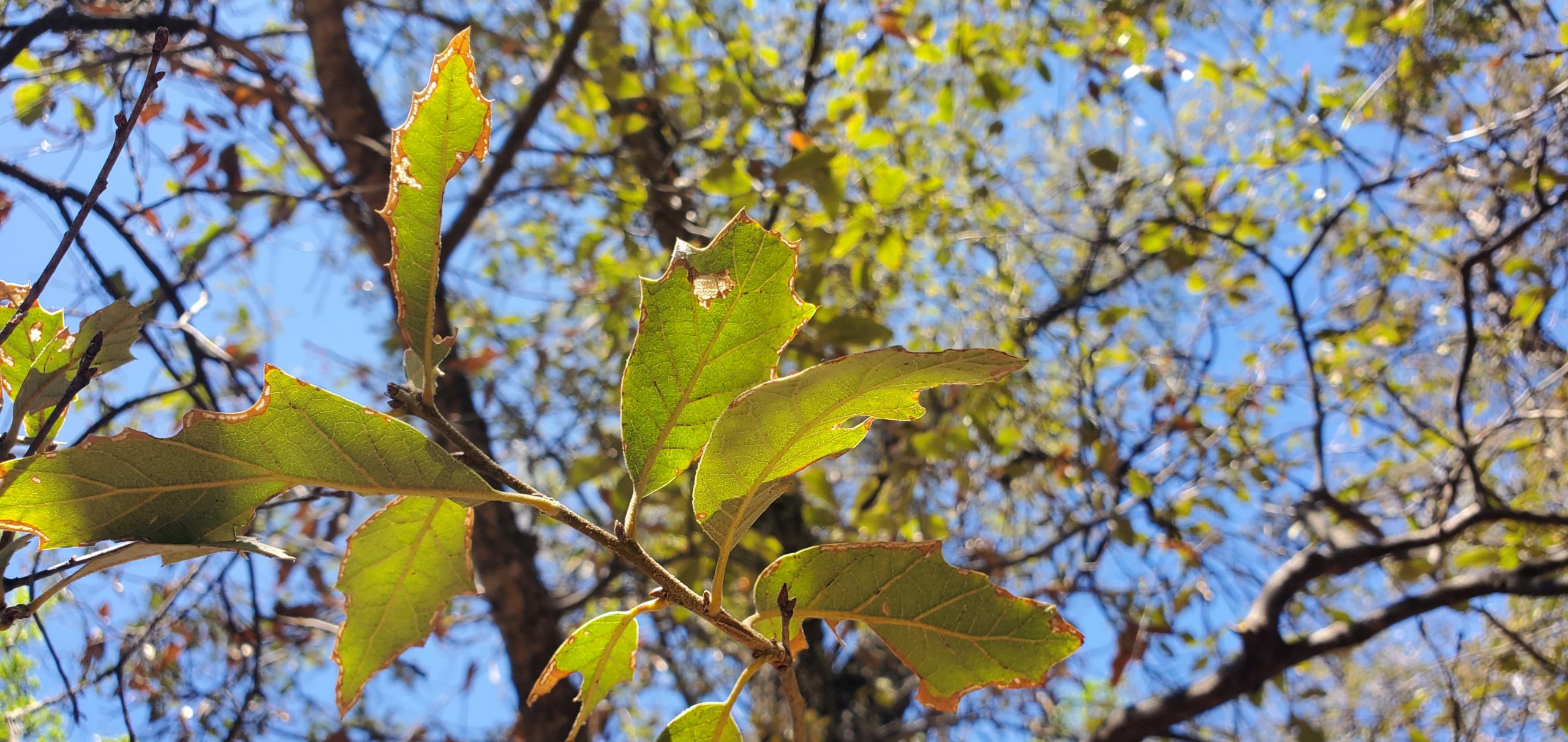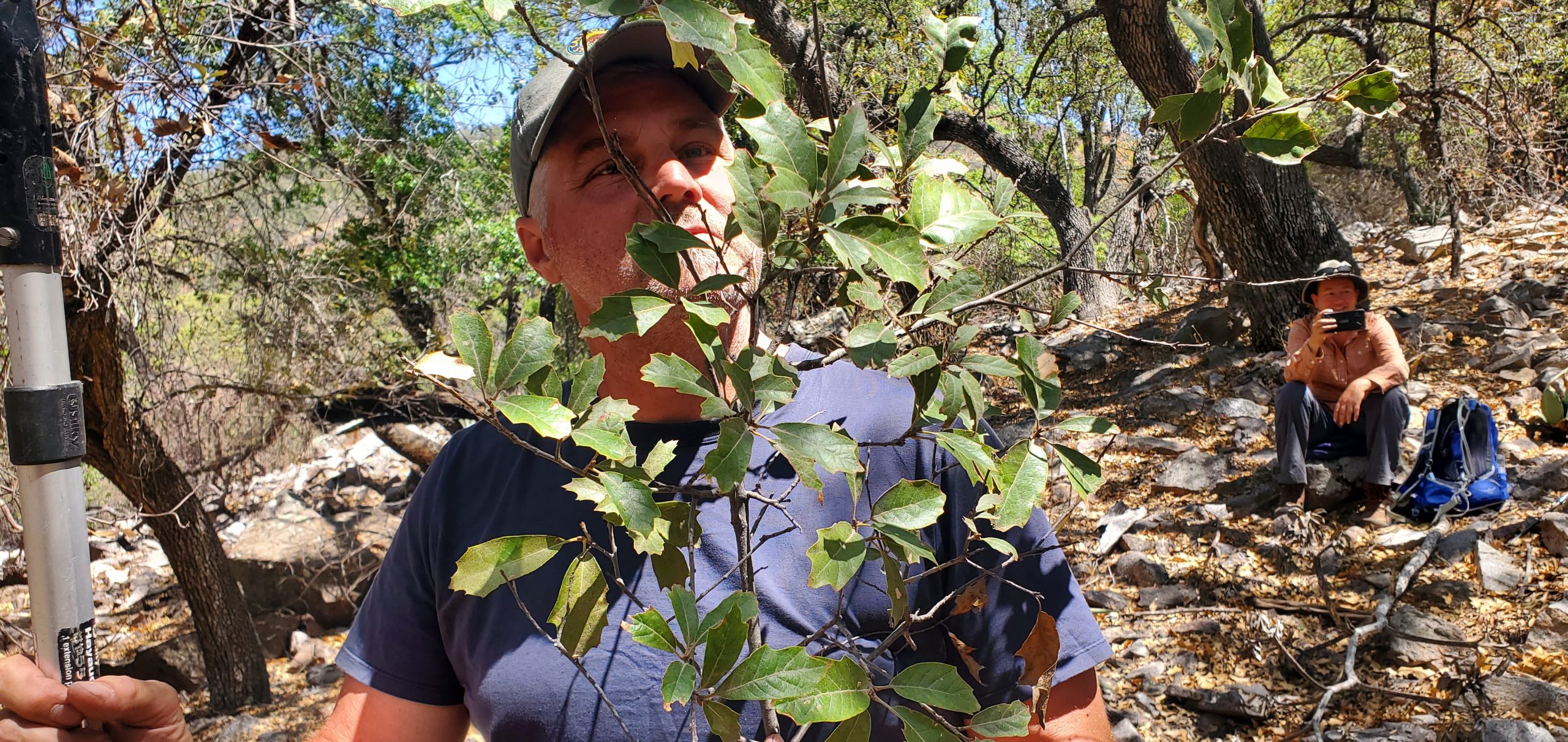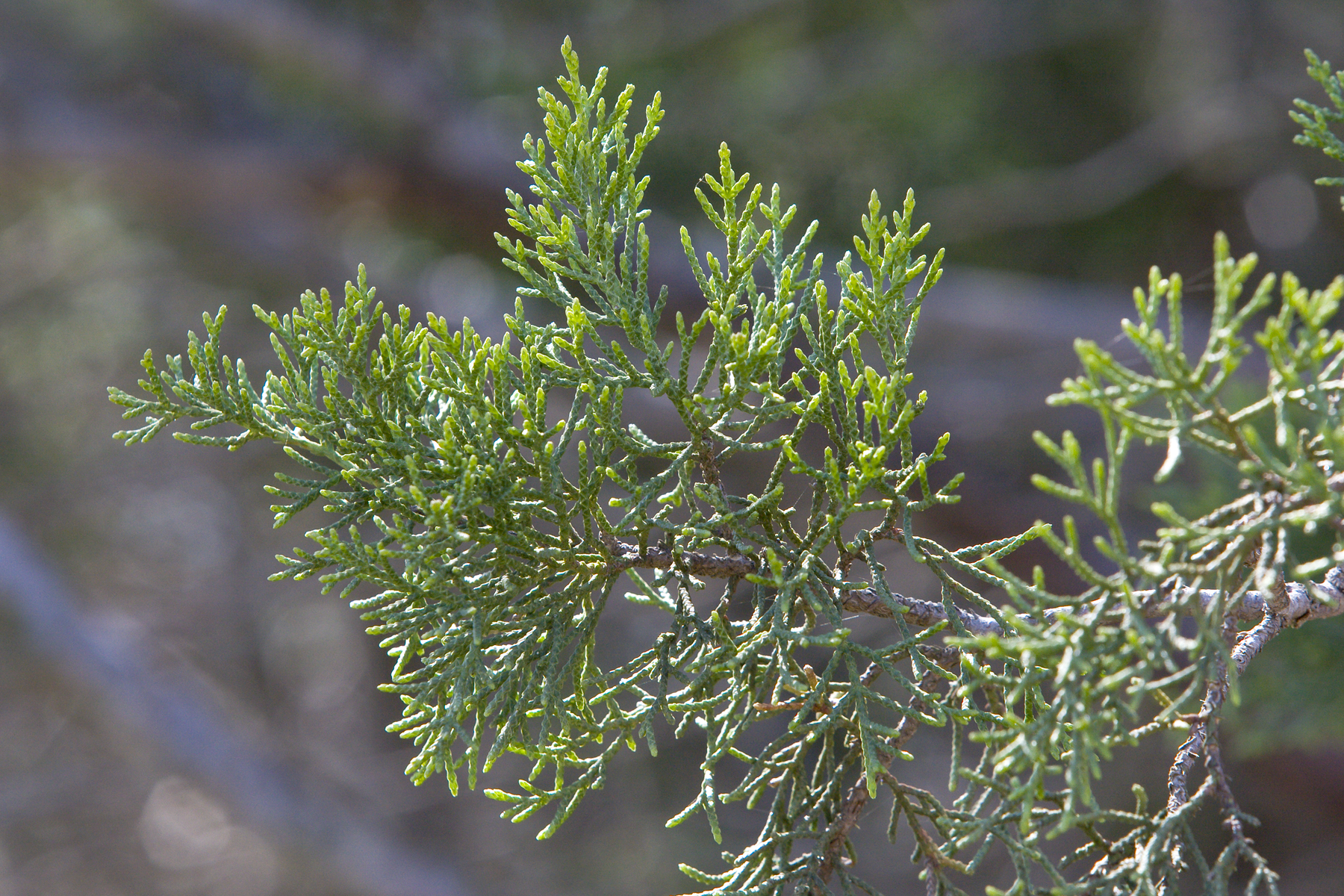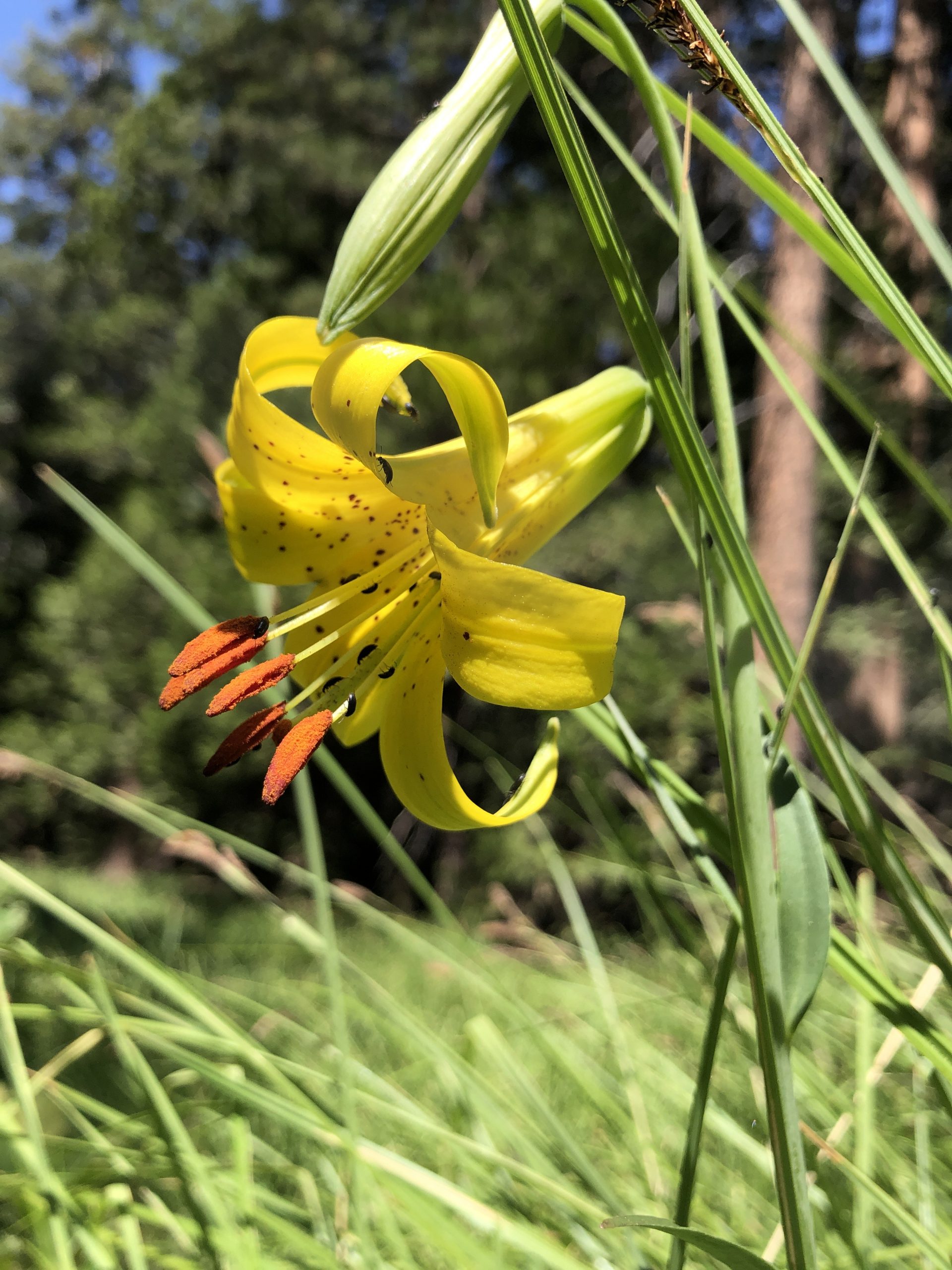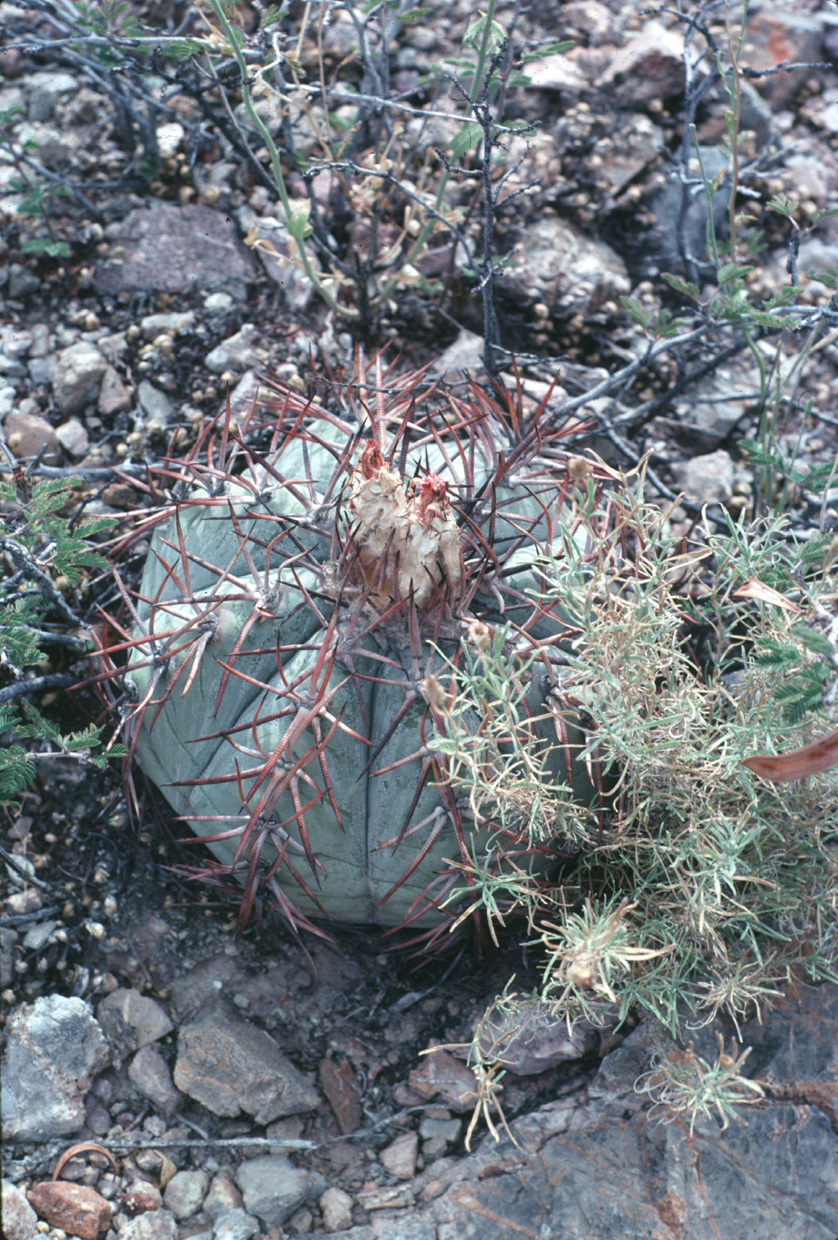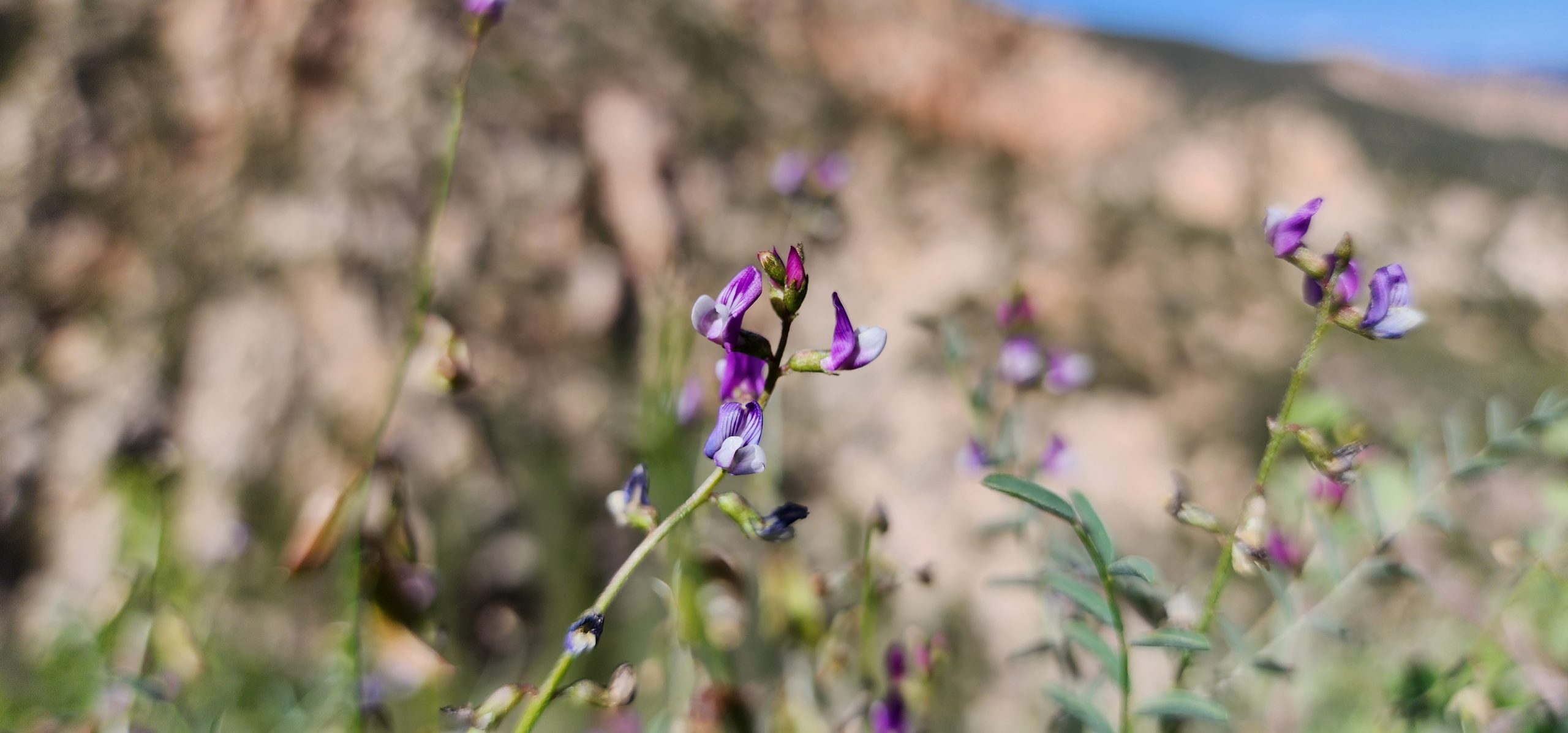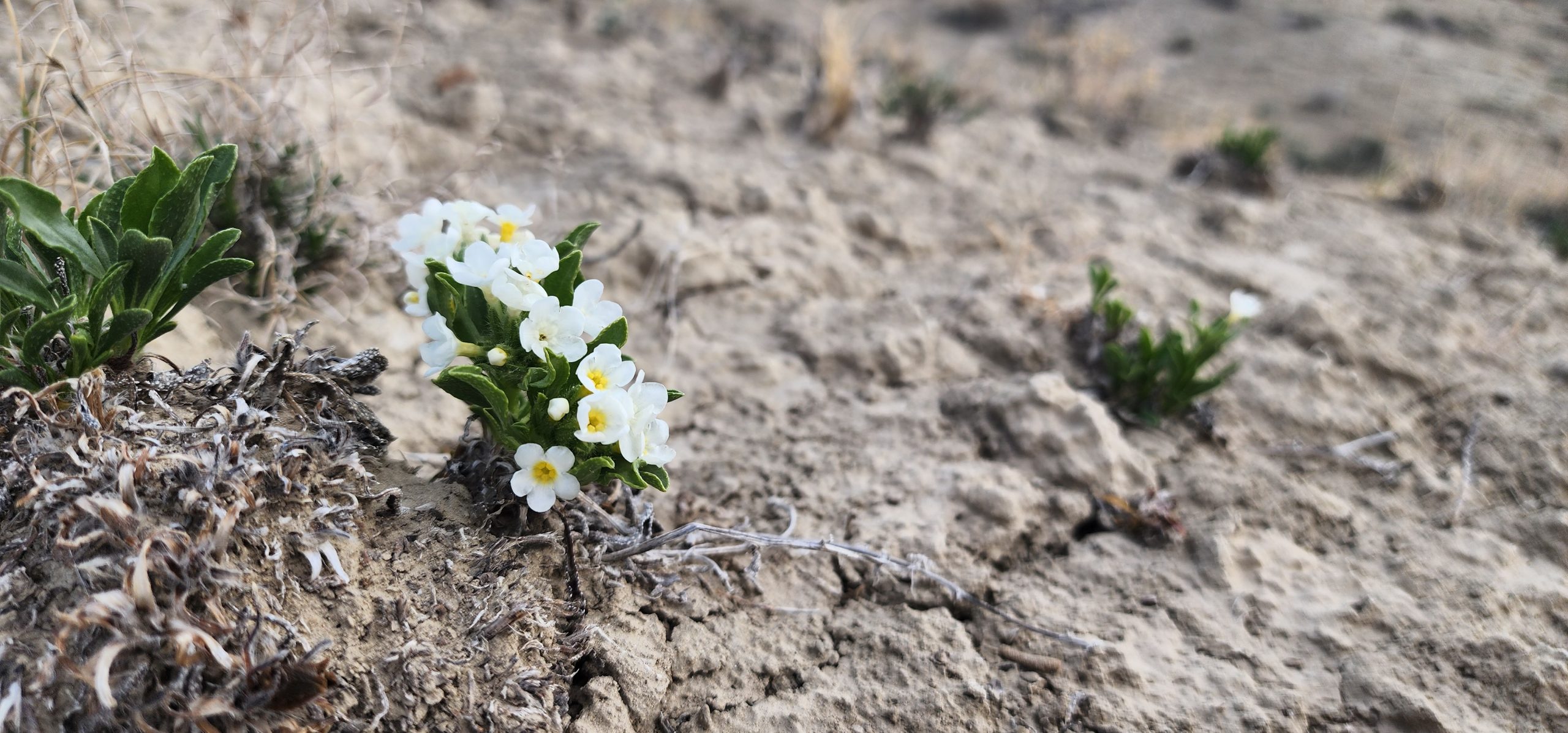Save Plants
Center for Plant Conservation
August News 2022
The Center for Plant Conservation (CPC) is a one-of-a-kind network, uniting plant conservationists from botanical gardens, arboretums, and other plant-focused organizations to save imperiled plants. Our network is strengthened by the expertise that each institution and individual brings, with CPC facilitating collaboration and harnessing the collective data, scientific research, and applied conservation experience needed to help us all in our collective efforts to Save Plants from extinction. This sharing of knowledge is a hallmark of the CPC network. When we share our experiences and expertise with others, we advance our shared mission and ensure that the plant conservation practitioners of today – and the next generation – have the knowledge, tools, and resources they need to Save Plants.
In this issue, we share stories that underscore the importance of collaboration and knowledge sharing with an exciting conservation success story from the United States Botanical Garden and their partners about the rediscovery of Quercus tardifolia in a recent joint expedition to Big Bend National Park, Texas. CPC Summer Fellow, Eduardo Charvel, shares an update on his project supporting the Seed Longevity Study, which will help us better understand the long-term viability of seeds in orthodox storage. We also celebrate CPC’s own VP of Science & Conservation, Katie Heineman, as August’s Conservation Champion in recognition of her commitment to the shared access and practical application of biological data to better support collaboration and conservation activities.
Thank you for your support and contributions to our network – we are all in this together, and together we save more plants than would ever be possible alone.
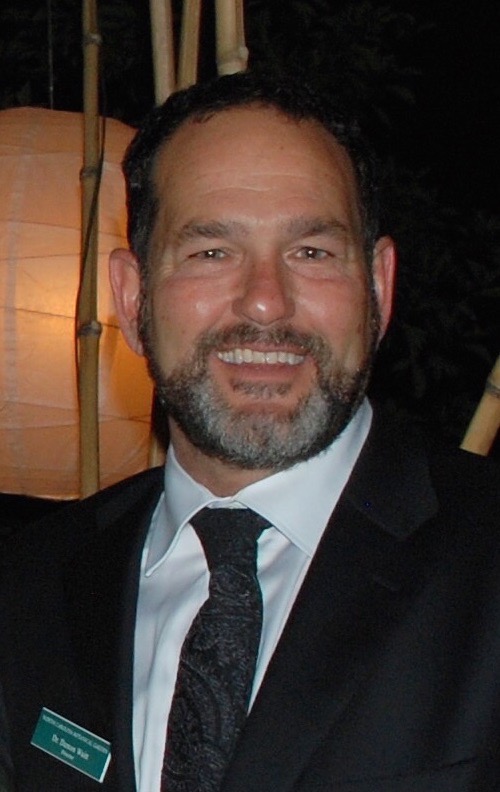
Damon Waitt
Director, North Carolina Botanical GardenU.S. Botanic Garden Update: Partnership Rediscovers Extinct Oak
The U.S. Botanic Garden (USBG) collaborates with other public gardens, federal and municipal agencies, and nonprofit organizations to achieve shared goals through projects that have wide-reaching impacts. These partnerships range from conservation of U.S. native rare plants and crop wild relatives to trainings and toolkits in urban agriculture and the use of school greenhouses and gardens. For several years, the USBG has partnered with The Morton Arboretum and the Global Conservation Consortium for Oak to expand efforts to study and protect five of the most threatened U.S. native oak species. Recently, one of these projects yielded an exciting find in the backcountry of southwest Texas.
In May 2022, researchers led by The Morton Arboretum and the USBG were thrilled to find a lone specimen of Quercus tardifolia, an oak previously thought to be extinct. The 30-feet-tall tree was found within Big Bend National Park in Texas, though it is in poor condition and in immediate need of conservation. First described in the 1930s, the species was believed to have gone extinct in 2011.Q. tardifolia is considered one of – if not the – rarest oaks in the world.
“The United States Botanic Garden is thrilled about the success of this collecting trip that rediscovered such a rare oak species,” said Susan Pell, Ph.D., acting executive director of the U.S. Botanic Garden, which is funding and collaborating on the project. “This collaborative discovery highlights the importance of partnerships in bringing together diverse expertise to save imperiled species.”
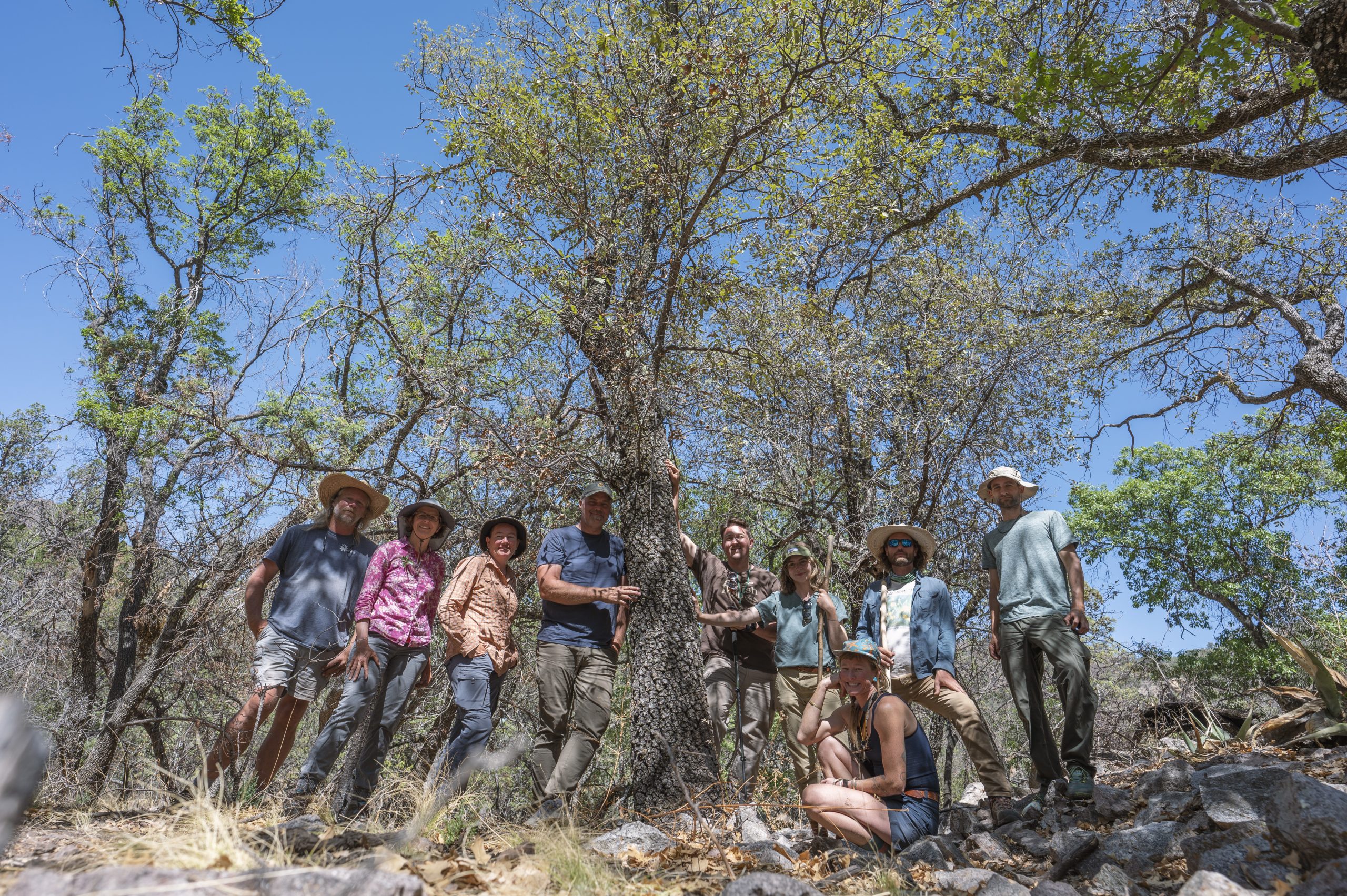
The team that made the discovery described the trunk as scarred by fire and showing signs of severe fungal infection. A drought or fire has the potential to end its life, and climate change makes this outcome more likely every year. The collaborators are now working with the National Park Service to reduce the immediate wildfire threat to the tree. Conservationists in this collaborative are moving quickly to return to search for additional trees, take cuttings and collect acorns.
“This work is crucial to preserve the biodiversity that Earth is so quickly losing,” said Murphy Westwood, Ph.D., Vice President of Science and Conservation at The Morton Arboretum. “If we ignore the decline of Q. tardifolia and other rare, endangered trees, we could see countless domino effects with the loss of other living entities in the ecosystems supported by those trees,” she said.
“This is important, collaborative research that is necessary for the conservation of Q. tardifolia,” added Carolyn Whiting, a botanist at Big Bend National Park. “The Chisos Mountains support a high diversity of oak species, partly because of the wide range of habitats available in this ‘sky island.’ There is still much to learn about the oaks in the Chisos.”
Collaborators on the trip included personnel from the USBG and The Morton Arboretum, Bartlett Tree Research Laboratories and Arboretum; Lady Bird Johnson Wildflower Center; NatureServe; Polly Hill Arboretum; San Antonio Botanical Garden; University of California, Davis Arboretum and Public Garden; and The Sul Ross State University A. Michael Powell Herbarium.
Preserving oaks is critical to ecosystems
Oaks are considered “exceptional” species for genebanking purposes because their acorns cannot be preserved using traditional seed banking methods such as cryopreservation and/or desiccation. Oaks, like many large-seeded fruit and nut trees, must be maintained in the wild or in cultivated living collections – which is why the involvement of botanic gardens is critical to their conservation. The researchers who found the Q. tardifolia tree are concerned that it is not producing acorns. Other methods of propagation, including grafting, are being pursued to preserve the oak’s future.
Oaks serve as an ecological anchor cleaning air, filtering water, sequestering carbon dioxide, and supporting countless fungi, insects, birds and mammals. Conservation efforts such as this benefit greatly from collaborative initiatives that include botanic gardens, conservation organizations, land holders, and a variety of scientists and horticulturists to secure a future for endangered species.
“In many ways, this tree is an ancient relic. Due to the changing climate, the world is completely different now than when it evolved,” said Wesley Knapp, chief botanist at NatureServe, who participated in the expedition. “It is incumbent upon us to learn from it and protect it while we still can in order to inform future conservation efforts,” he said. “Nature rarely hands us a second chance, and I doubt we’ll get a third. We won’t waste it.”
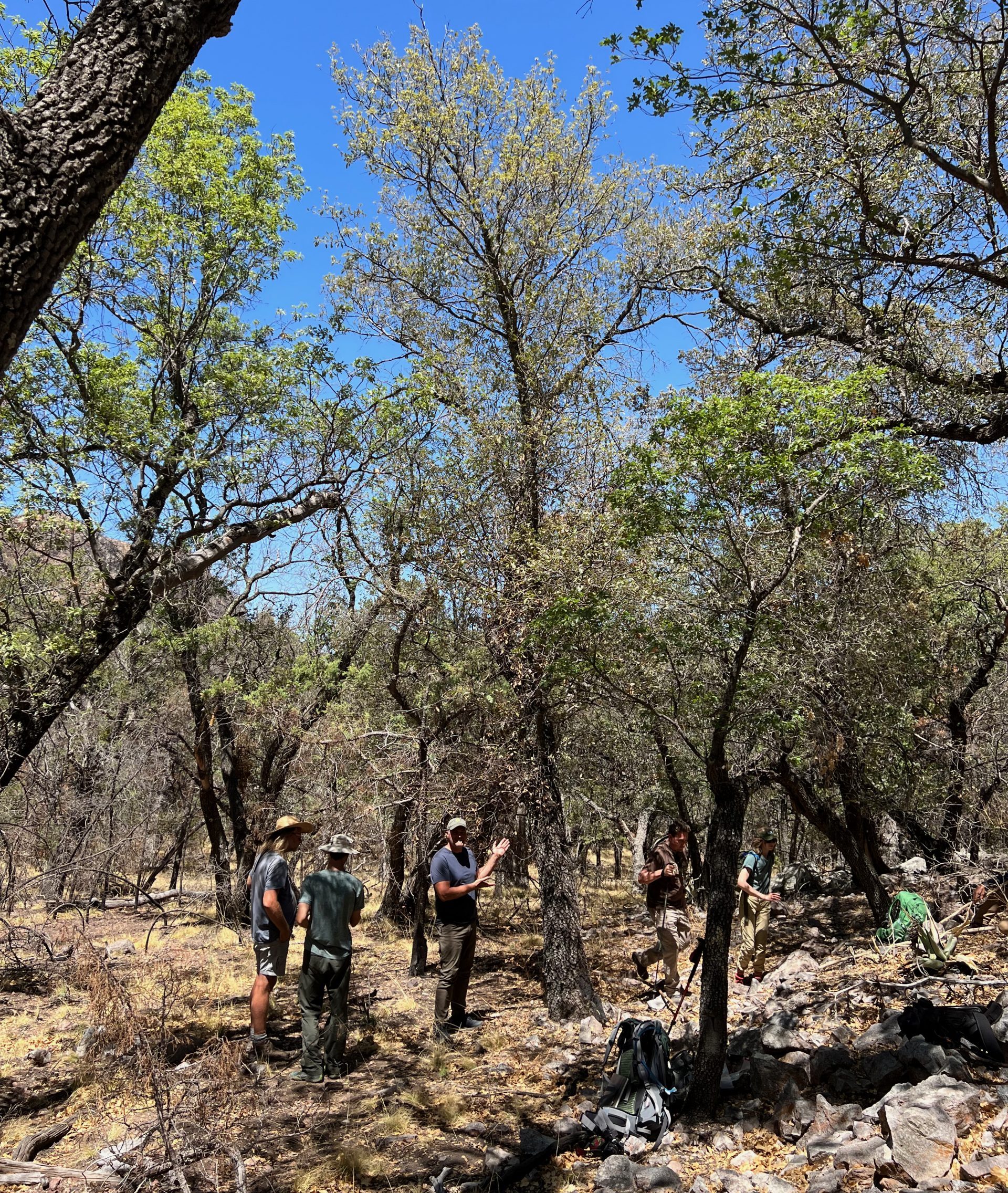
Learn more about the USBG’s many plant conservation, scientific research, training and education, and urban agriculture partnerships at www.USBG.gov/Partnerships.
CPC Summer Fellowship: Seed Longevity Study Update
Hello to the CPC network! My name is Eduardo Charvel, and I am the Center for Plant Conservation’s biodiversity informatics summer fellow for 2022. I recently graduated from San Diego State University, where I studied evolutionary biology and participated in both host-parasite co-evolution and plant ecology research. My first exposure to botany was through the research of plants with Dr. Lluvia Flores-Renteria and Dr. Sula Vanderplank, where I participated in the phylogenetic analyses of Mountain Desert Sage (Salvia pachyphylla) and Santa Rosa Island Sage (Salvia brandegeei), two sage species that are endemic to the transnational biodiversity hotspot known as the California Floristic Province.
Part of my research consisted of collecting tissue samples of these sage species on both sides of the United States-Mexico border. During these field expeditions, I was able to experience the beautiful endemic flora of high-elevation ecosystems in the Sierra San Pedro Martir and the rare island species that are only found in the Channel Islands. I also saw the dire positions some of these species are in as a result of detrimental practices, such as agriculture and housing development. Because of this, I’ve chosen to pursue a career that uses bioinformatics – the use of computational tools to analyze biological data – to help conduct research that will aid the conservation of endemic and threatened plants.
Armed with my undergraduate research experience, I joined the Center for Plant Conservation in May 2022. My summer fellowship focuses on the IMLS Seed Longevity Study, which seeks to find better ways of modeling how long seeds can survive in storage. Organizations like the Native Plant Seed Bank at the San Diego Zoo Wildlife Alliance take care of massive collections of seeds, stored as insurance in case of ecological disasters and extirpation of rare plants. Because of the restricted numbers of some rare plant species, it is important to not only have enough seed for restoration, but also to save representatives that correspond to different populations in order to preserve genetic diversity. Current methods involve periodical germination testing of stored seeds until viability has dropped enough that a new collection is required. It is difficult, however, to predict when this drop-off in seed viability will occur using traditional germination methods. The time of year in which seeds are collected, the amount of rainfall that occurred in the wet season, and other climatic variables all influence how healthy the seeds are in a specific accession. It is therefore important to find a way to better predict the seed longevity of a species without relying solely on germination tests.
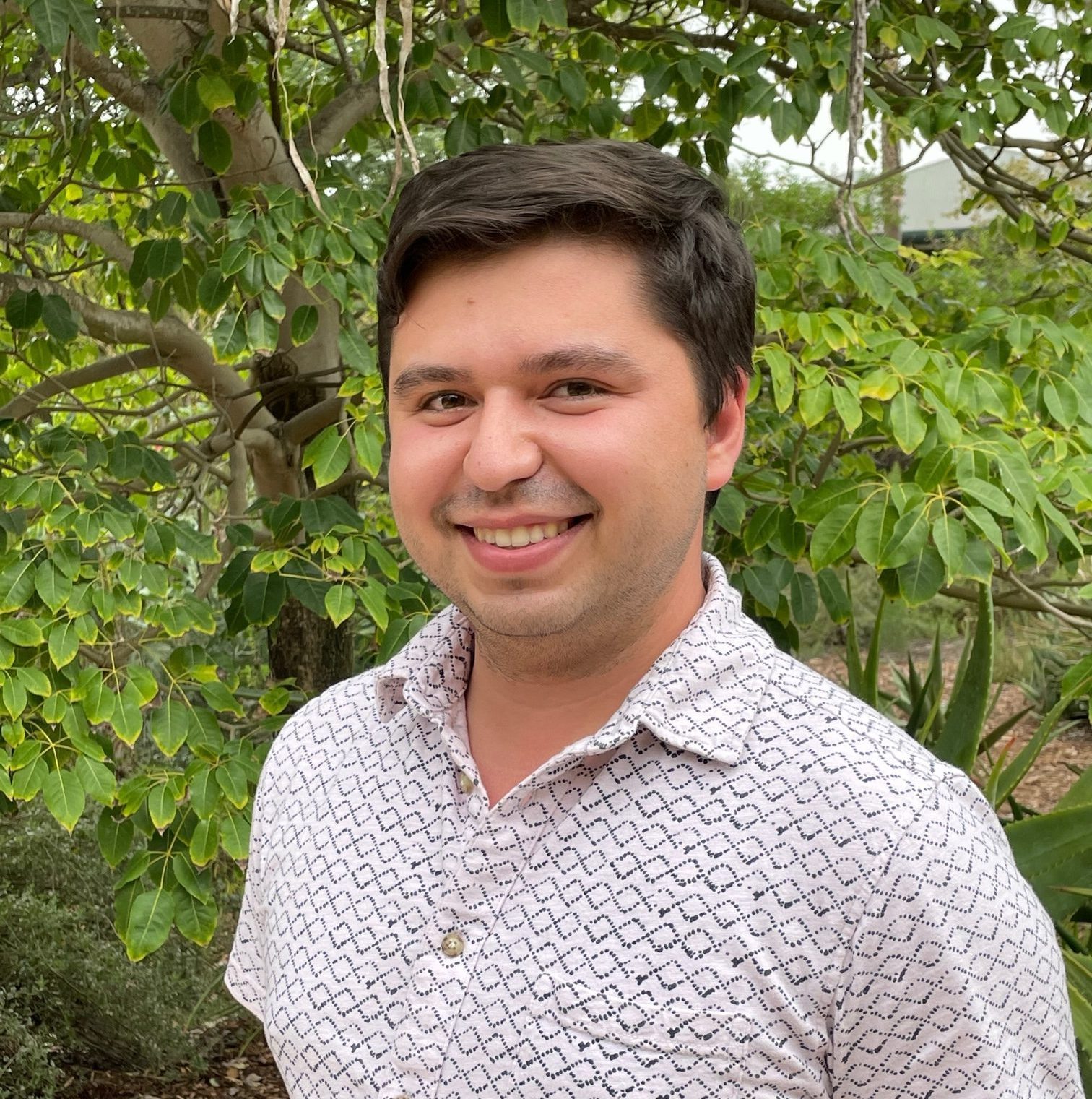
The Seed Longevity Study uses measurements of RNA Integrity of seeds – also known as RIN – to create more efficient predictions of how long seeds can last in storage before they have to be recollected from the wild. During my time at the CPC, I compiled data from a variety of sources – including Nature Serve, USDA Plants, the Global Biodiversity Information Facility, WorldClim, and the TRY Plant Database – to formulate a predictive model based on morphological, ecological, and climatic factors. The species in the study are quite diverse, taken from a variety of plant families and ecosystems. These include the Tecate cypress (Hesperocyparis forbesii), a rare cypress that only occurs in California and Baja California; the turk’s-head cactus (Echinocactus horizonthalonius), a small barrel cactus endemic to northern Mexico; and the lemon lily (Lilium parryi) which is a rare species considered to be the only lily native to the state of Arizona.
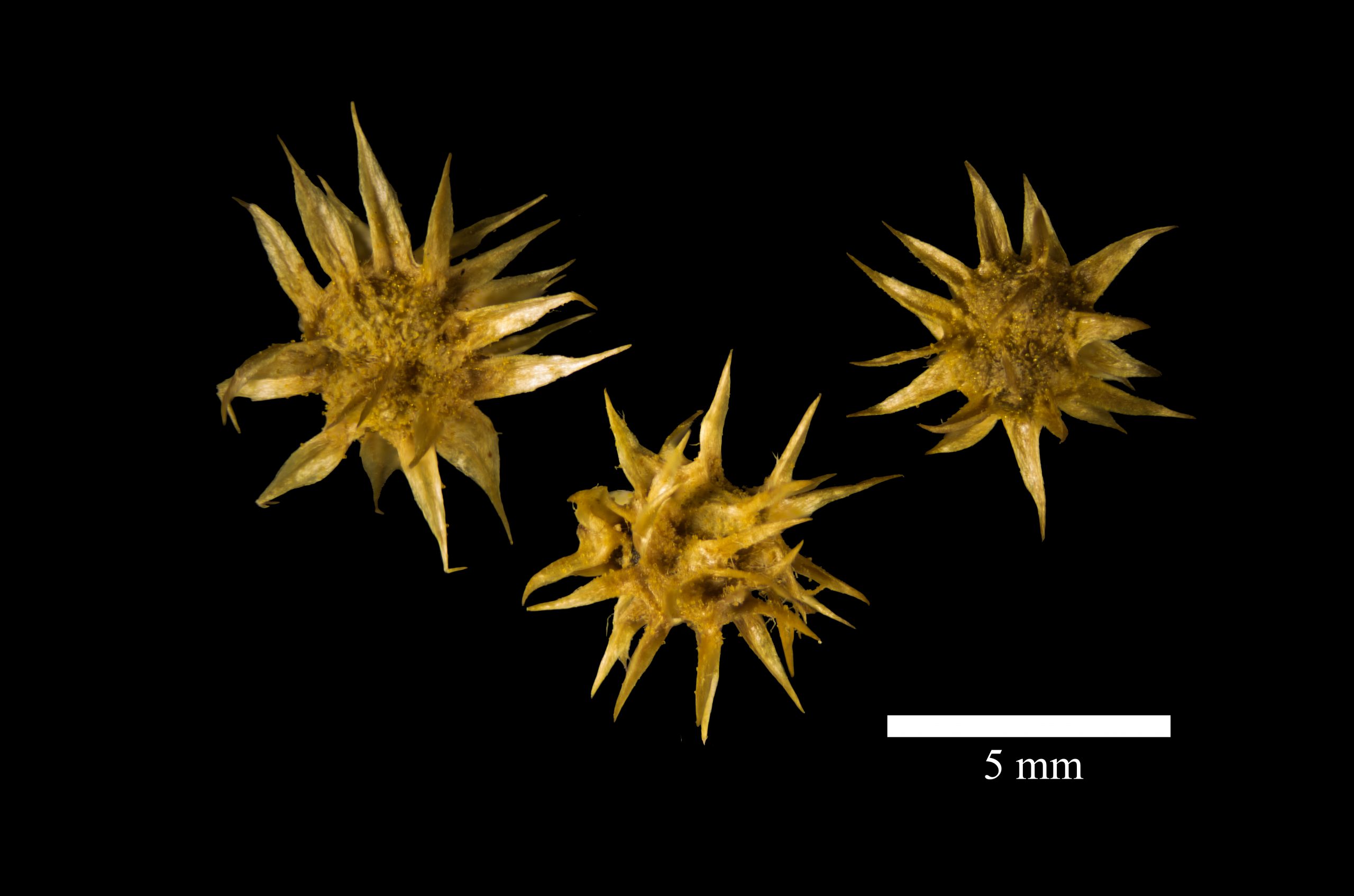
This variety of plants has allowed me to look at a number of interesting factors, which I am comparing across all 100+ rare species in the study. For example, I am investigating whether or not different habitats affect the longevity of seeds. Do seeds from wetter habitats, like bogs or coastal wetlands, evolve to be more or less resistant because of the abundance of water and threat of rot? The growth habit of a specific taxon is also interesting, because trees and shrubs might produce more seeds in their lifespan when compared to herbaceous species. This might translate to tree seeds having less of a need to persist in the soil. Other factors I am evaluating for relevance in predicting seed longevity include dispersal type (animal or wind or water) and climatic factors (rainfall and temperature).
Creating an accurate model of seed longevity can help seed banks to better anticipate when their seed stores will lose viability, and to organize new recollection expeditions at appropriate times. This means that populations of rare and endangered plants will be better conserved, and seed banks will always be prepared to repopulate ecosystems that have been devastated by natural disasters or human impact.
Katie Heineman
This month’s Conservation Champion, Dr. Katie Heineman, is at the heart of many of CPC’s networkwide conservation initiatives – from the educational resources housed in the Rare Plant Academy to the Seed Longevity Study, and more. Her commitment to the shared access and practical application of biological data advances our mission to Save Plants by promoting collaboration and knowledge sharing, making plant-saving information readily accessible in a centralized place for conservation practitioners. Katie’s work shows us that passion and teamwork are a winning combination to Save Plants!
When did you first fall in love with plants?
I have always been fascinated with biodiversity in a very nerdy way. When I was a kid, I kept a binder with hundreds of animal fact sheets, and my best friend and I would create little dioramas with animal figures in different ecosystems. I crossed over to loving plants in college when I did a research experience in Borneo, where the plant diversity is breathtaking. It’s amazing to see pitcher plants below 40-meter tall ironwood trees draped with orchids, ferns, and bromeliads – oh my! There is just so much to know and love about plants. Plus, I love how they can’t move, so it’s easy to revisit, study, and “get to know” a plant, especially a tree.

What was your career path to the Center for Plant Conservation?
I did my PhD research on tropical forest community and ecosystem ecology at the University of Illinois and the Smithsonian Tropical Research Institute in Panama. For field work, I tromped around Fortuna Forest Reserve in western Panama collecting plant tissue samples to evaluate how tropical trees store critical elements, such as nitrogen and phosphorus, for times of stress. With this experience, I learned how to manage and unite forestry and plant trait datasets for analyses – but also developed a distaste for the labwork that would have been key to generating more data to advance my particular research topic. After a stint exploring data science options in Silicon Valley, I decided that conservation and collections management would be great way to contribute my background in data and biodiversity toward something positive (without getting my hands too dirty in the lab). I am thankful to the Plant Conservation team at San Diego Zoo Wildlife Alliance and the CPC network for acquainting me with plant conservation science and being patient with me as I learned the ropes over these past five years. I love this field not only for the subject matter, but also for the uniquely friendly and supportive community of plant conservationists.
In your experience, what are some of the pressing conservation needs impacting the rare and native plants of the United States?
Rare plants need skilled and well-resourced advocates on the ground. The care of these species requires a great deal of sustained study and curation, so we need to advance the profession of conservation botany and find support for botanical knowledge within our private and public institutions to ensure that these plants have skilled protectors for generations to come. That is why I am proud that CPC is making learning and training resources freely available on our website through Rare Plant Academy (RPA) and our upcoming Applied Plant Conservation Online Course.
What are some of the current conservation initiatives you’re helming for CPC?
I currently help oversee two main types of CPC programs: 1) programs that fund our partners to secure and learn from ex-situ collections of rare plant species, and 2) those that catalogue the plant-saving work of our partners in a rare plant knowledge base. I am particularly excited at the moment by our IMLS-funded seed longevity study that has funded our PIs to recollect seed from populations of plants held in orthodox seed banks for fifteen years or more. We are working with the USDA-ARS National Laboratory for Genetic Resources Preservation in Fort Collins to determine if we can use a metric of seed health known as RNA Integrity to better inform curation decisions. As a community, we need more exact estimates for how long rare plant species live in seed banks, so we can prioritize which collections to grow out or recollect before it’s too late.
Much of your work is focused on the access and application of biological data for conservation research and activities – in what ways does this advance CPC’s mission to save plants?
In contrast to animal conservation, for which whole teams of people at many institutions may be working with a single rare species, plant conservation knowledge can be extremely limited to specific organizations or individuals. One of CPC’s current priorities is creating a public knowledge base for plant species in the National Collection, so that practitioners can learn from past knowledge and avoid reinventing the wheel. Through our CPC Rare Plant Academy grant, CPC has been pulling multi-media forms of plant conservation information into our National Collection database – including recorded conference proceedings, newsletter articles, and photos – to create a more complete, one-stop reference for our network’s work on a particular species.
CPC is also excited to be partnering with Dr. Joe Bellis and Dr. Matthew Albrecht on the reinvigoration of CPC’s Reintroduction Registry/Database, which represents a repository of knowledge for plant translocation – perhaps the most time-intensive and important actions in plant conservation. The registry is online now, and the database will be available in full to contributors later this year.
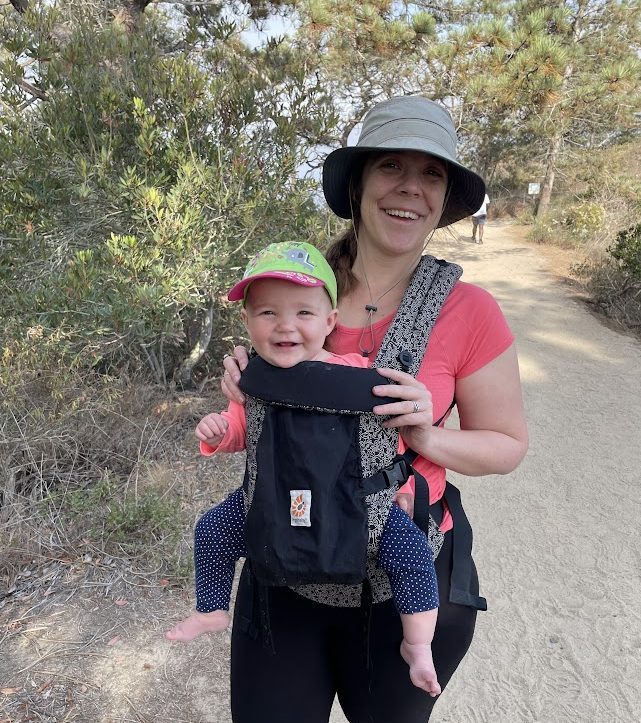

What has surprised you about working with and learning more about rare plants? What successes or challenges have you encountered in your work?
Working with rare plants has higher highs and lower lows compared to other projects I’ve been involved with. For instance, it’s a great feeling to visit the Torrey Pines restoration site I am collaborating on with San Diego Zoo Wildlife Alliance and the staff at California State Parks and see that some of the seedlings planted last year are already one meter tall! However, it is also very distressing when we go to census seedlings and find higher mortality than expected, or seedlings beginning to show signs of drought stress. The emotions are stronger for a plant reintroduction than when you are simply conducting a field experiment, because it’s more than an academic question – you really want to see the plants do well for the sake of the species persistence.
What advice would you give to those who wish to learn more about how they can help save imperiled plant species?
For students interested in becoming involved in plant conservation as a profession, I would suggest subscribing to the CPC newsletter, CPC Rare Plant Academy, and the Plant Conservation Alliance listserv, to learn more about opportunities to work, intern, or volunteer at botanical gardens, environmental consulting groups, or federal agencies. If you are looking at graduate schools, I recommend seeking out programs that have collaborations with public gardens. I studied plant biology in graduate school, but collaborating with a botanical garden was not on my radar until very late in the game – and I think I would have loved it. And of course, I would really encourage you to stay tuned for our CPC Applied Plant Conservation Course, so you can learn from experts in the field about the best methods for saving plants.
For members of the public, I would say that visiting your local botanical garden and joining a native plant society in your area are the best ways to learn about opportunities for plant conservation support. These experiences might include invasive species removal efforts, planting of native species on your own property, or even contacting your representative to help push forward important policy changes that increase support for rare plants.
Now Hiring: President & CEO of CPC
As the Center for Plant Conservation continues its search for our next President and CEO, we wanted to share a reminder that while the priority application period has closed, we are still accepting applications for the role. If you or someone you know are interested in bringing your expertise and enthusiasm to our work, please submit your application. We have received several exciting applications at this stage, but we want to be certain we don’t miss any candidates!
We are seeking a visionary leader to move the organization forward in its mission to conserve rare plants and support global environmental resiliency. Working collaboratively with an engaged Board of Trustees, the President and CEO is responsible for stewarding the organization’s ongoing operations, its long-term strategy, and financial security. Leading a dedicated team of staff, the President serves as the voice and face of the organization, frequently communicating with both public and scientific audiences. CPC’s leader oversees the development of CPC programs and maintains strong, mutually reinforcing relationships with a dynamic, cohesive network of partner institutions whose research and initiatives form the foundation of CPC’s work.
The Center for Plant Conservation is a one-of-a-kind network that unites leading plant conservationists from botanical gardens, arboretums, and other plant- and conservation-focused organizations to work collaboratively to save imperiled plants throughout their native range in the United States and internationally. We seek a champion for plant conservation and environmental resiliency to serve as CPC’s next President and Chief Executive Officer and to lead CPC’s operations and strategic initiatives.
Focus Areas
- Organizational Leadership, Strategy, and Management
- Staff Leadership
- Board Relations
- Financial Management and Fundraising
- Communications and Outreach
- Program Oversight
- Relationship Building, Collaboration, and Network Management
Location
CPC’s headquarters is located at the San Diego Zoo Safari Park in Escondido, California, operated by the San Diego Zoo Wildlife Alliance, a CPC Participating Institution. Periodic remote work is possible. Regular travel is expected.
Start Date
Late Fall 2022
Detailed Position Information
The complete Position Specification can be found here.
To Apply
Please visit the Protrero Group website and select “Apply.”
Interested candidates should apply by August 1, 2022, for priority consideration. Applications should include a resume and a cover letter describing your qualifications that match the position criteria and what you will bring to the role.
Please contact Potrero Group Managing Director, Andrew Leider at aleider@potrerogroup.com with any questions.
National Collection Spotlight: White-rock Larkspur
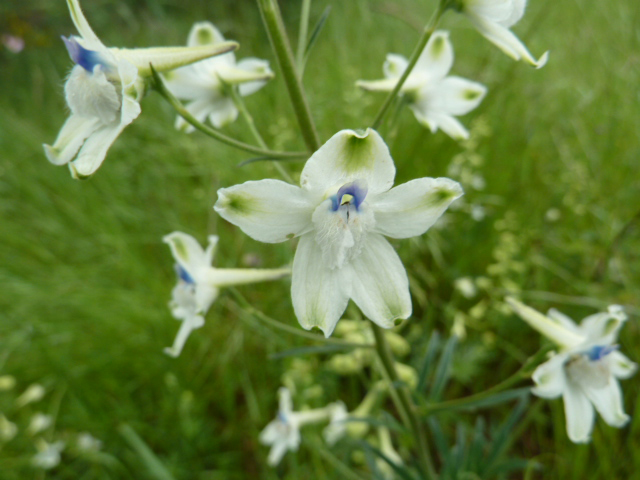
The White-rock larkspur (Delphinium nuttallii ssp. ochroleucum) is a member of a genus famous for beautiful blue flowers. The flowers of this particular species are predominantly white, with a splash of blue towards their centers on small nectariferous petals. This larkspur lives in upland prairies and rocky basaltic cliffs in the Willamette Valley of Oregon, with one population nearby along the Columbia River in Southwestern Washington.
Two other species of rare larkspur share the Willamette Valley with the White-rock larkspur. This interesting coincidence is likely a result of climate events thousands of years ago – a series of massive floods which occurred at the end of the last Ice Age. As of 2020, over 50,000 seeds of this species from 180 accessions are held in collection at the Rae Selling Berry Seed Bank & Plant Conservation Program. These seeds come from 16 sites across both Oregon and Washington, with the majority of the seeds coming from just two of the sites.
Learn more about conservation actions taken for the enchanting White-rock larkspur on its National Collection Plant Profile, and help support its conservation with a Plant Sponsorship.
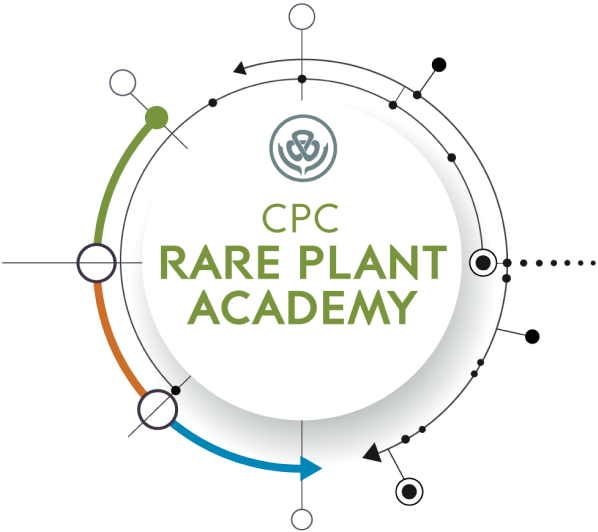
As Seen on CPC’s Rare Plant Academy: Photo Posting Tool
Are you familiar with the photo posting tool on the Rare Plant Academy? Adding photos to the Plant Profiles in our National Collection gives rare plants more visibility, putting a face to a name—and adding a touch of personality! It also helps the scientific community and the public to better engage with these special plants. The increased attention can lead to more support for critical conservation work in the form of Plant Sponsorships, which help our community working hard to Save Plants.
It’s easy to post photos to our website. Our Institutional and Individual Conservation Partners can do this from the Rare Plant Academy homepage or directly from their user dashboard. Include a caption sharing which species is present in your image, where the photo was taken, and who took the picture. With thousands of species in our National Collection, your photos can help these rare plants get seen!
Upcoming Conferences

2022 California Native Plant Society Conference
October 20-22, 2022 | San Jose, CA
The 2022 CNPS Conference is taking on an essential topic: How do we restore our connections to plants, place and people? Attendees are invited to be part of the conversation and the effort to celebrate, protect and restore California’s plants—and everything connected to them.
The 2022 CNPS Conference will offer opportunities to connect, learn and share around California’s native plants—and the diverse communities that depend on them. Presenters will include conservationists, scientists, horticulturalists, educators, researchers, outdoor enthusiasts, culture keepers and more. Together, we’ll explore how a deeper understanding of shared work today will lead to a better tomorrow for California’s native plants, through programming centered on four specific tracks: plant science, conservation, horticulture, and education.
Registration is live. Learn more.

2023 National Native Seed Conference
March 27-31, 2023 | Washington, D.C.
The National Native Seed Conference connects Research, Industry, Land Management, and Restoration professionals, providing the premier opportunity to develop relationships and share information about the collection, research and development, production, and use of native plant materials.
The 2023 National Native Seed Conference is dedicated to the science, practice, and policy of producing and effectively using native seed. The conference supports the America the Beautiful Executive Order, National Seed Strategy for Rehabilitation and Restoration, and the UN Decade on Ecosystem Restoration.
Registration coming August 2022. Learn more.
Get Updates
Get the latest news and conservation highlights from the CPC network by signing up for our newsletters.
Sign Up Today!Employment Opportunities
This job opportunity at the UC Davis Arboretum and Public Garden focuses on the development and stewardship of Arboretum plant collections and GATEways teaching gardens, cutting-edge sustainable and educational landscapes that engage millions of visitors! The position will be part of a larger team working to make the campus landscape more beautiful, sustainable, engaging, and reflective of the unique academic work of UC Davis. We’re looking for creative and energetic candidates who will enjoy collaborating with diverse campus and community partners and mentoring UC Davis students.
GATEways Horticulturist Job Summary:
Under the supervision of the Arboretum and Public Garden’s (APG) Director of Public Horticulture and Engagement and in close coordination with the Director of GATEways Horticulture and Teaching Gardens, this position operates as a project manager for projects to develop and improve GATEways teaching gardens and scientific plant collections in the Arboretum and on the UC Davis campus. Works directly with UC Davis faculty, students, and staff as well as with key community members to design and care for cutting-edge sustainable and educational landscapes that incorporate sustainable gardening strategies, innovative uses of space and technology, art, interpretive signs, plant labels, changing exhibits, and public programs that engage University visitors. Sustainable strategies include selecting regionally-appropriate plants and climate-ready plants (e.g., California native plants, Mediterranean climate plants, and desert plants) and garden designs that result in low-input and low-maintenance landscapes. Responsible for developing, managing, and implementing student internship programs, volunteer programs, and lifelong learning programs with a focus on the intersection of horticulture and health and wellbeing. Responsible for developing, managing, and supervising high-level and highly-skilled volunteers, civic and student service clubs, and others. Participates in a variety of fundraising activities for assigned GATEways projects, including writing grants for project and program support and providing funding proposal materials. As needed, provides donor engagement and stewardship support for Arboretum and Public Garden and GATEways donors. Manages all aspects of assigned projects, including supervision of students and volunteers, budget planning, and expense reporting. Actively participates as an expert in assigned areas such as biodiversity, sustainability, edible landscaping, urban horticulture, climate adaptation, and green infrastructure which are the core components connecting campus landscapes with UC Davis academic and research programs.
For the full job description and information on how to apply, go to https://arboretum.ucdavis.edu/blog/job-opening-gateways-horticulturist. Apply by August 18, 2022 for full consideration.
Ways to Help CPC

Advocacy Initiatives
Advocacy is an important tool at our disposal to use in saving rare and endangered plants. In the broadest sense of the word, advocacy means to share and communicate the mission of our organization. Sometimes, however, public policies, laws and regulations hinder, thwart and even counter our mission of saving plants. That is when we need to focus our efforts to urge lawmakers to rule in favor of these imperiled plants. Plants can’t voice their concerns on Capitol Hill, so we must.
_______________________
S. 2372 – Recovering America’s Wildlife Act (RAWA), was passed by the House of Representatives in a 231-190 bipartisan vote on June 14, 2022. The legislation will now move to the Senate for consideration, and a vote may come within days before Congress’s August 2022 recess.
ACT NOW to let your Senators know that the CPC supports “RAWA” and hope they will vote “yes” when S. 2372 comes to the floor for a vote soon. Contact your representatives or call the Capitol switchboard in D.C. on (202) 224- 3121 and ask to be connected to your Senator’s office, where you’ll be able to speak to a member of their staff.

Support CPC By Using AmazonSmile
As many of us increasingly rely on home delivery, we want to remind you that you can keep your home stocked AND Save Plants. If you plan to shop online, please consider using AmazonSmile.
AmazonSmile offers all of the same items, prices, and benefits of its sister website, Amazon.com, but with one distinct difference. When you shop on AmazonSmile, the AmazonSmile Foundation contributes 0.05 percent of eligible purchases to the charity of your choice (Center for Plant Conservation).
There is no cost to charities or customers, and 100 percent of the donation generated from eligible purchases goes to the charity of your choice.
AmazonSmile is very simple to use—all you need is an Amazon account. On your first visit to the AmazonSmile site, you will be asked to log in to your Amazon account with existing username and password (you do not need a separate account for AmazonSmile). You will then be prompted to choose a charity to support. During future visits to the site, AmazonSmile will remember your charity and apply eligible purchases towards your total contribution—it is that easy!
If you do not have an Amazon account, you can create one on AmazonSmile.
Once you have selected Center for Plant Conservation as your charity, you are ready to start shopping. However, you must be logged into smile.amazon.com—donations will not be applied to purchases made on the Amazon.com main site or mobile app. It is also important to remember that not everything qualifies for AmazonSmile contributions.
When ordering online, remember you can still help Save Plants. Please feel free to share this email with your friends and family and ask them to select Center for Plant Conservation.
Thank you all for ALL you do.
Donate to CPC
Thank you for helping us save plant species facing extinction by making your gift to CPC through our secure donation portal!
Donate Today
